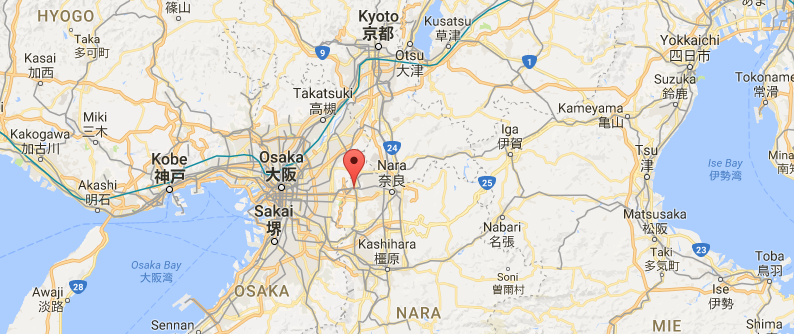On Sunday (18 Sep) we had a special guest give a talk about how citizens installed solar panels on public institutions in Ikoma City, Japan. Kusunoki Tadashi is a boardmember of Citizen Energy Ikoma (市民エネルギー生駒), a citizens group who took the fight against climate change into their own hands by leveraging public space to produce electricity locally. They put solar panels on the rooves of public buildings decreasing the local carbon footprint, and used the profits of the excess electricity sold back to the utility into other public projects. Mr Kusunoki spoke for about 30 minutes telling us about the groups story, its objectives and business model, and the status of the three projects that they have completed so far.

Ikoma, a 200,000 person bedroom town between Osaka and Nara City, has a particularly eco-friendly history. It is aiming to be the most most energy efficient municipality in Japan. Citizen Energy Ikoma (CEI) was founded in 2013 and was the first in Nara Prefecture to execute such an energy initiative. They set out on this program with a few things in mind: First, they wanted the initiative to be citizen-funded. There was to be no money from government agencies or banks, and no corporate interests at play. They collected a lot of small contributions (in about $1000 increments) from private citizens. More than 70% of the contributions were from Ikoma locals. A second point was to involve retirees, to use “Silver Human Resources” (シルバー人材) as Mr Kusunoki put it. They wanted to empower retirees and show how they could give back to younger generations.
CEI worked with the city and secured space on the roof of a building at a local water treatment plant. They installed 273 solar panels at the cost of 17M yen (about $220K CAD). The installation was completed in March of 2014 and produces about 50kW of electricity.
The business plan was developed to extend over a 20 year period. The original citizen donors are able to get a small return (better than bank interest says Mr Kusunoki) on their $1000 investment. Profits from selling electricity back to the electricity utility go into new projects or programs. So far they have paid for signage at the children’s facility, power conditioners for the seniors home, and sponsored a number of environmental education initiatives including workshops for kids to learn how to make solar-powered cars and trains.
The success of the first installation lead to the development of two more facilities. In 2015 a new children’s facility (南こども園) was being built, and CEI was able to install 297 panels on the roof.
CEI also installed 224 panels on an open bank behind a senior’s facility. Both of these installations can produce about 50kW each, bring the combined total of all three facilities to 150kW. This removes about 55,000 kilograms of CO2 out of the air, and saves on about 40,000 barrels of oil per year.
The children’s facility was of particular interest to the CEI. It is an official Emergency Muster Point, meaning in the case of a disaster like an earthquake, it is deemed a safe place for people to retreat to. Having a ready-made energy supply at such a muster point is pragmatic strategy.
Mr. Kusunoki said that the future is bright for the children of Ikoma. They are trying to make Ikoma a model and promote it as the best place to live in the Kansai region. Their goal is to show how empowered citizens can create safe, local energy and contribute to a more resilient distributed energy supply chain in the case of a natural disaster. In the future the CEI is looking at how these initiatives can turn into second careers for retired people. Furthermore, they are exploring more ways having for citizens become local energy producers.
It was a pleasure to have Mr Kusunoki speak to us. It definitely encouraged me to think more about what we could do in our own communities (see my next post Thoughts on Citizen Energy). You can read more about what the CEI is doing in Ikoma here:





